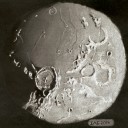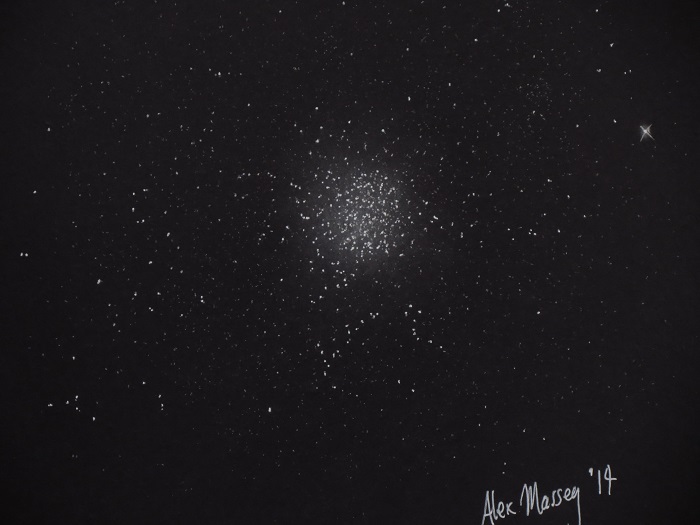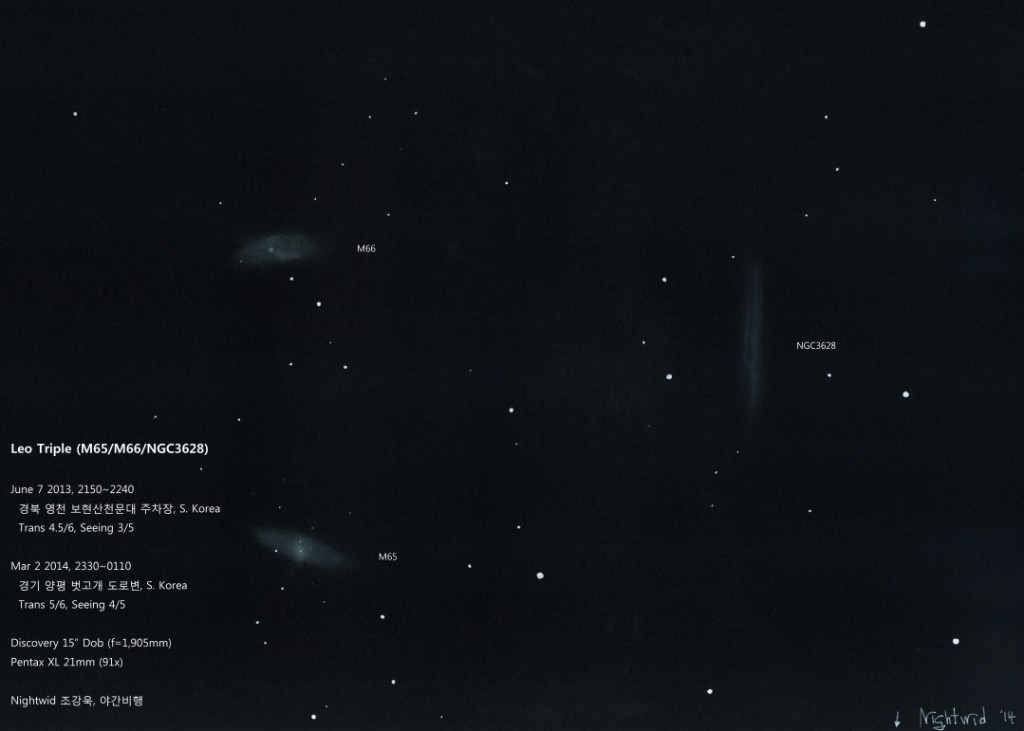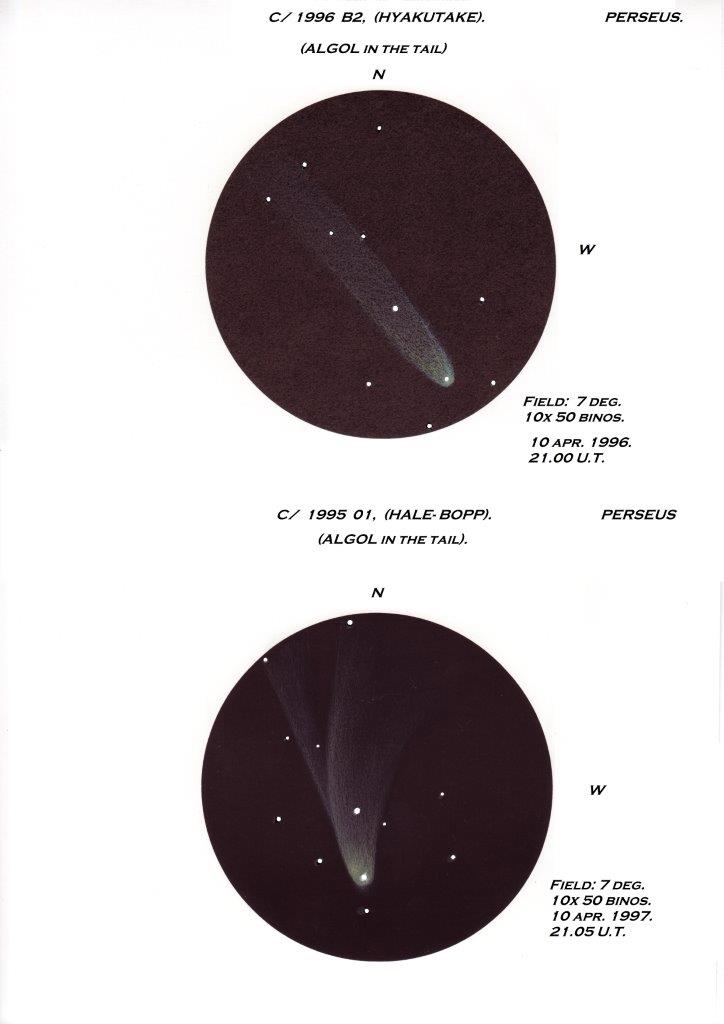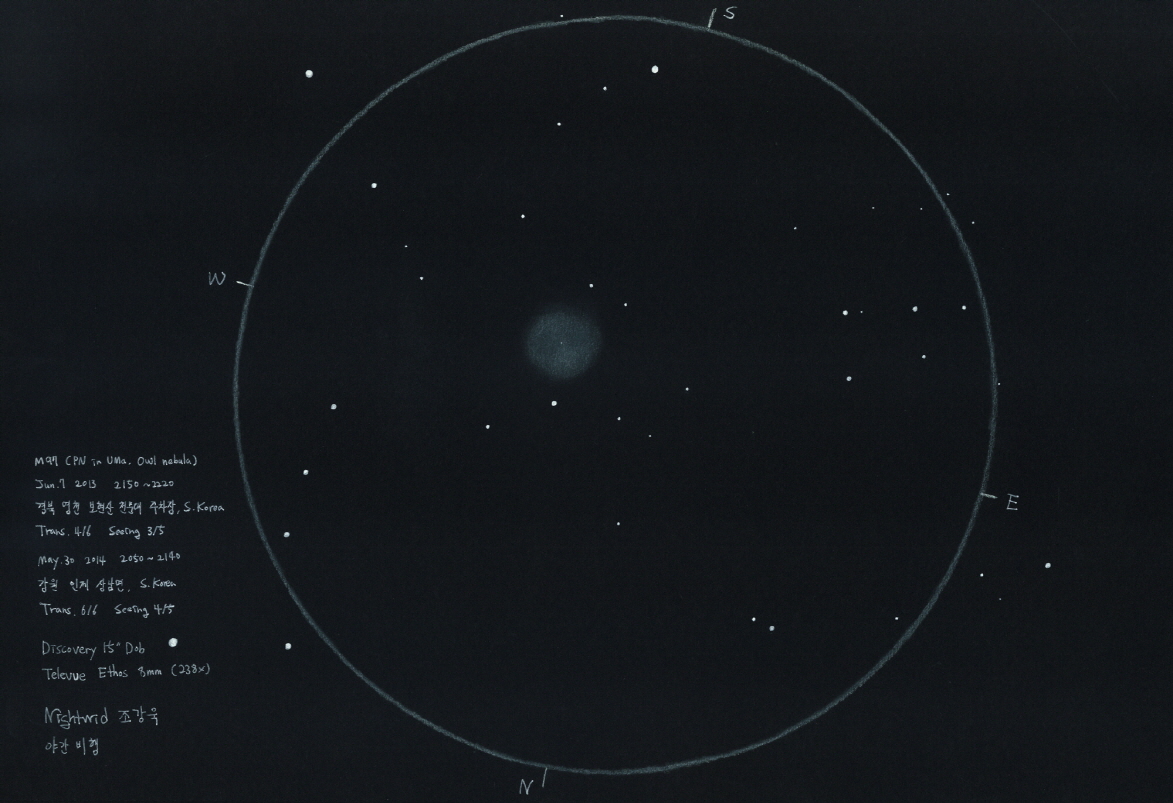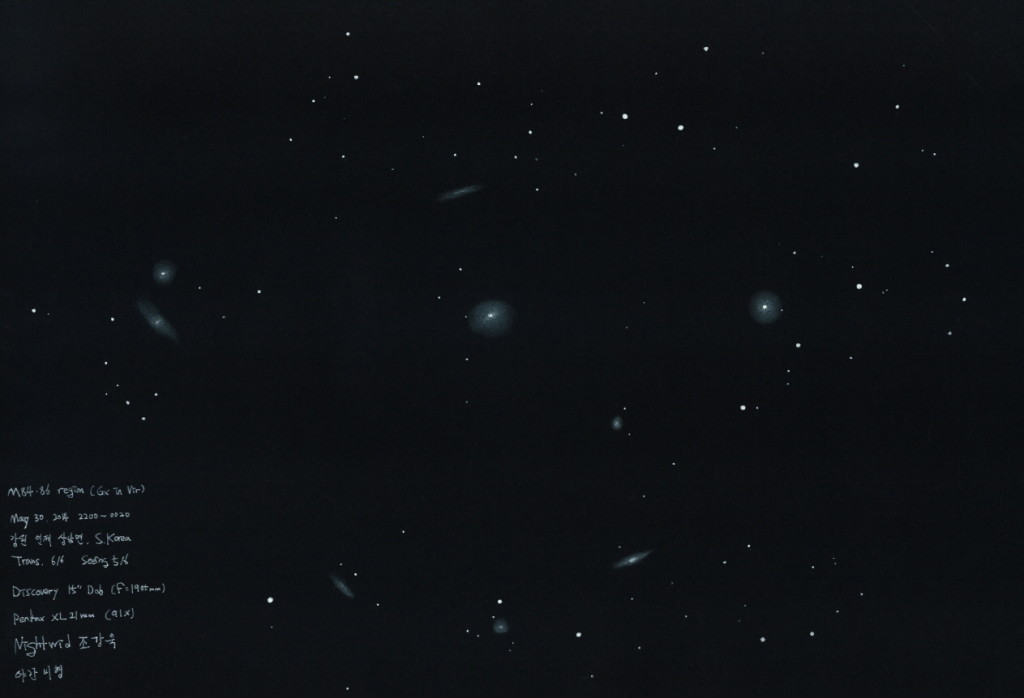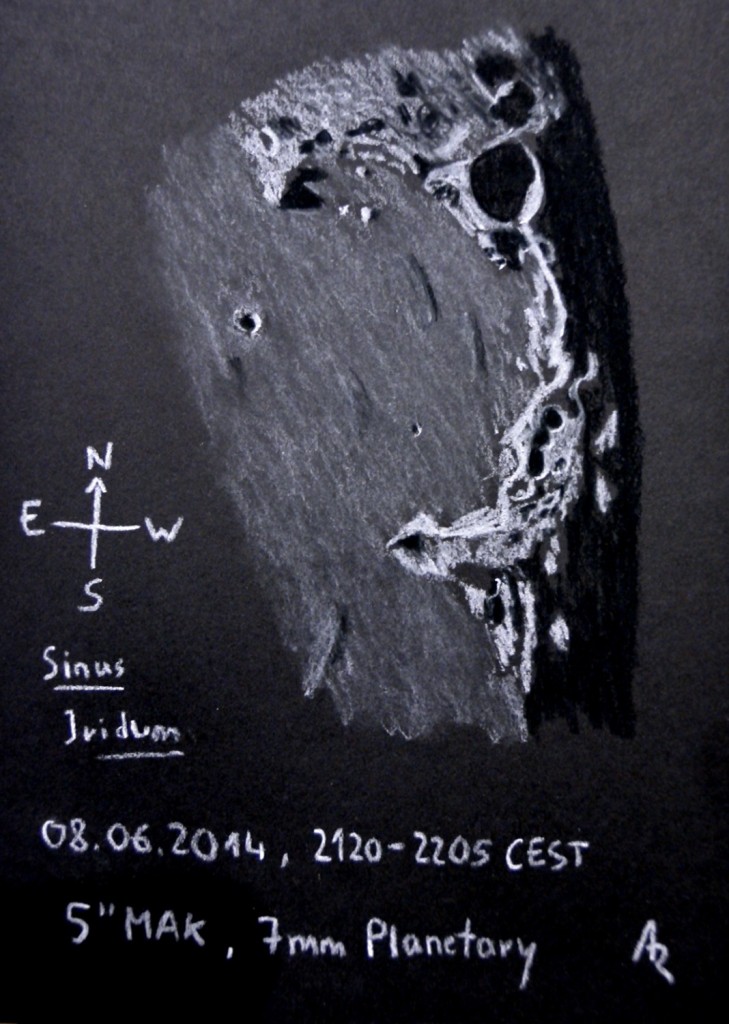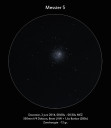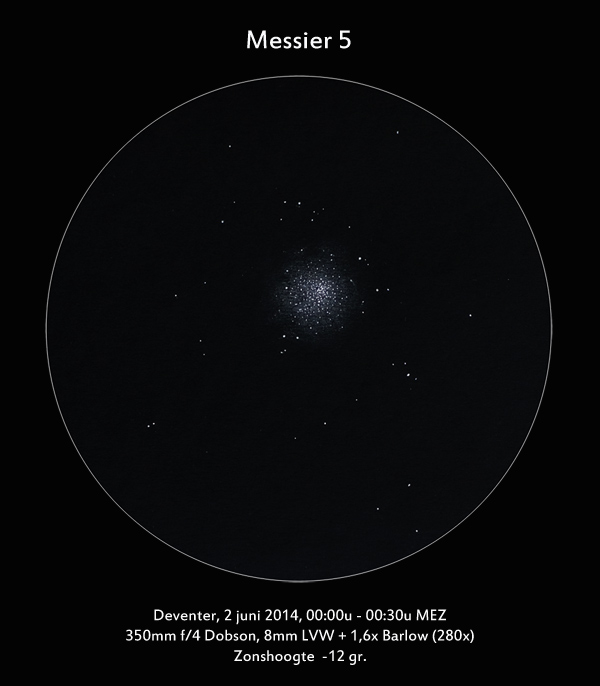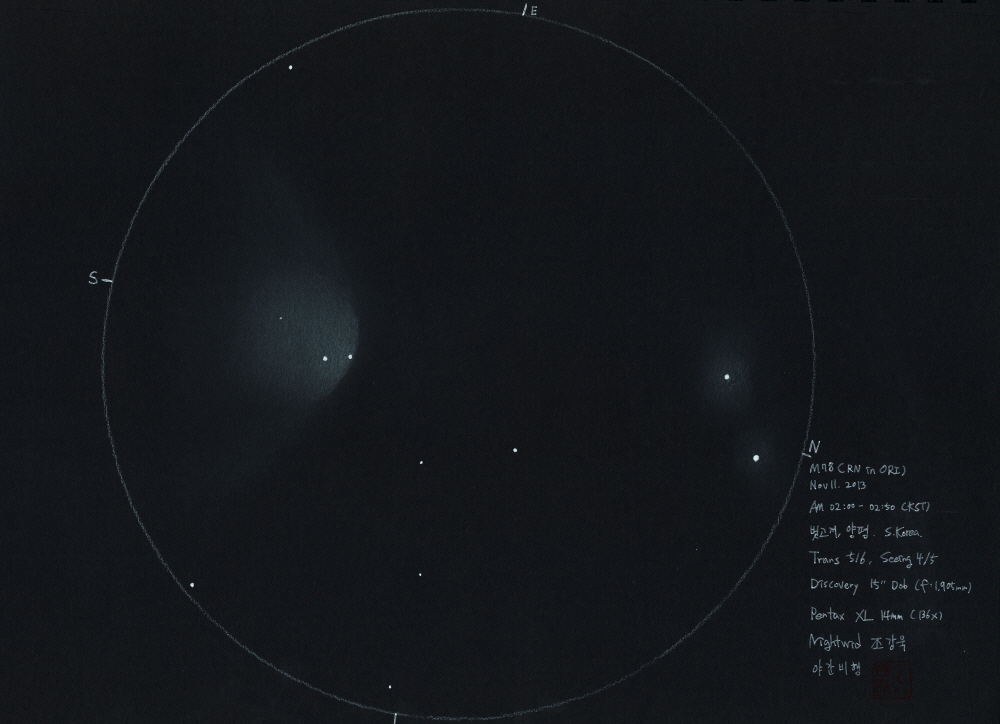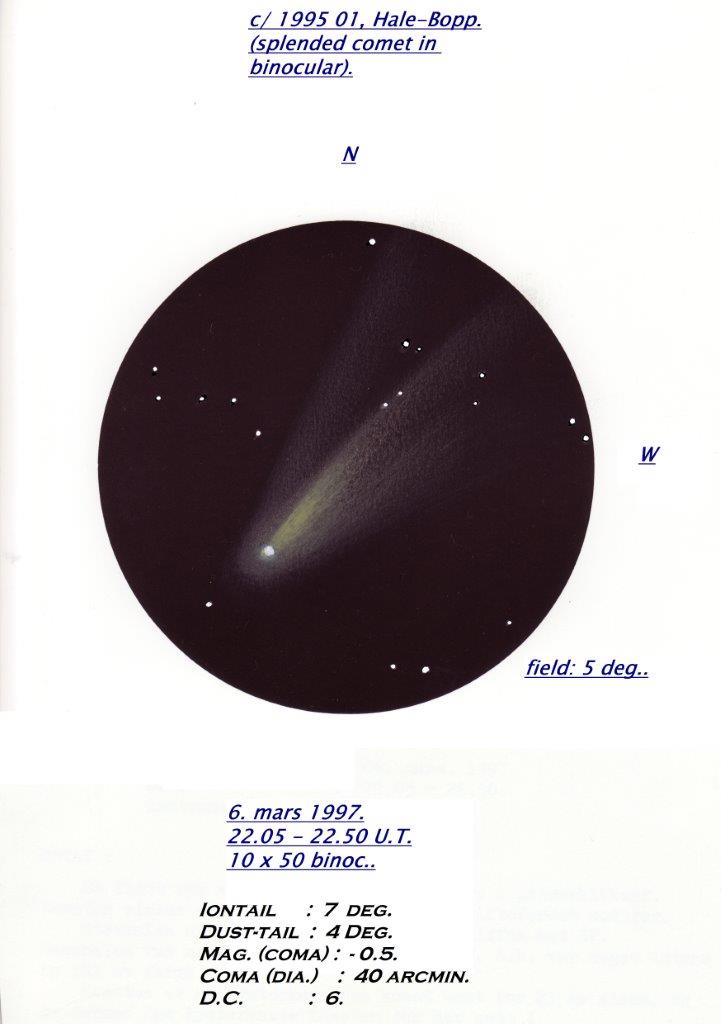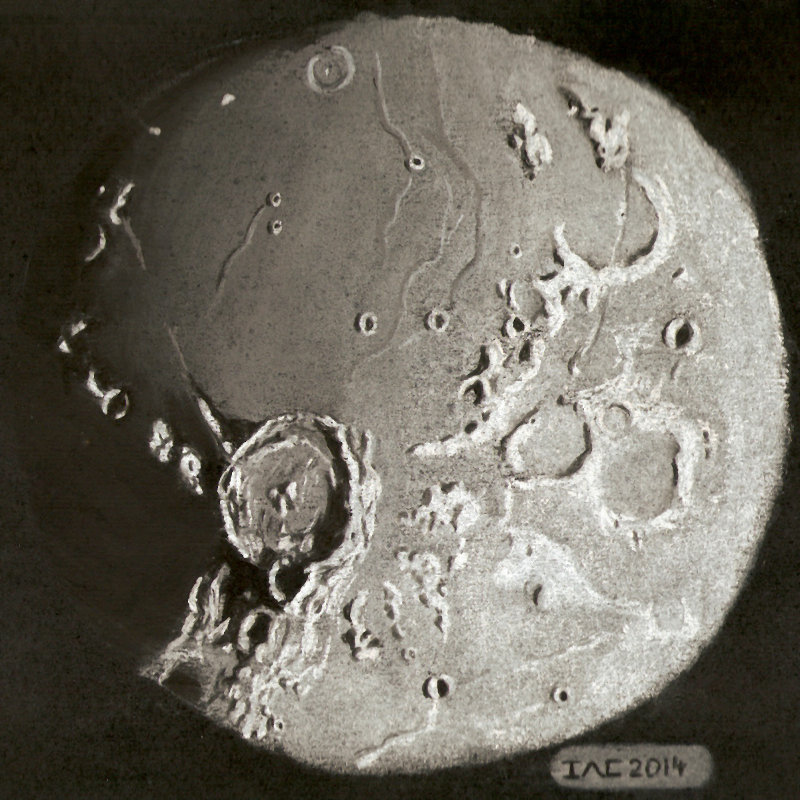
Here is a sketch of the Moon on the 5th of September from my backyard
in Adelaide, South Australia.
The moons phase was waxing at 83%, with only the very western edge
still in shadow. I observed with a C11 SCT. Seeing was quite
reasonable, so I took a 15mm eyepiece + 2x Barlow for a close look.
The shallow illumination on Mare Humorum made the creases on the mare
floor stand out. Crater Gassendi, toward the bottom, showed stark
shadows. Rimae Hippalus was visible, passing through the partially
submerged crater Hippalus at the top right. Because I used a diagonal
prism, the sketch is mirror imaged.
I used pastel chalks and black and white pastel pencils on black
paper.
-Ivan
